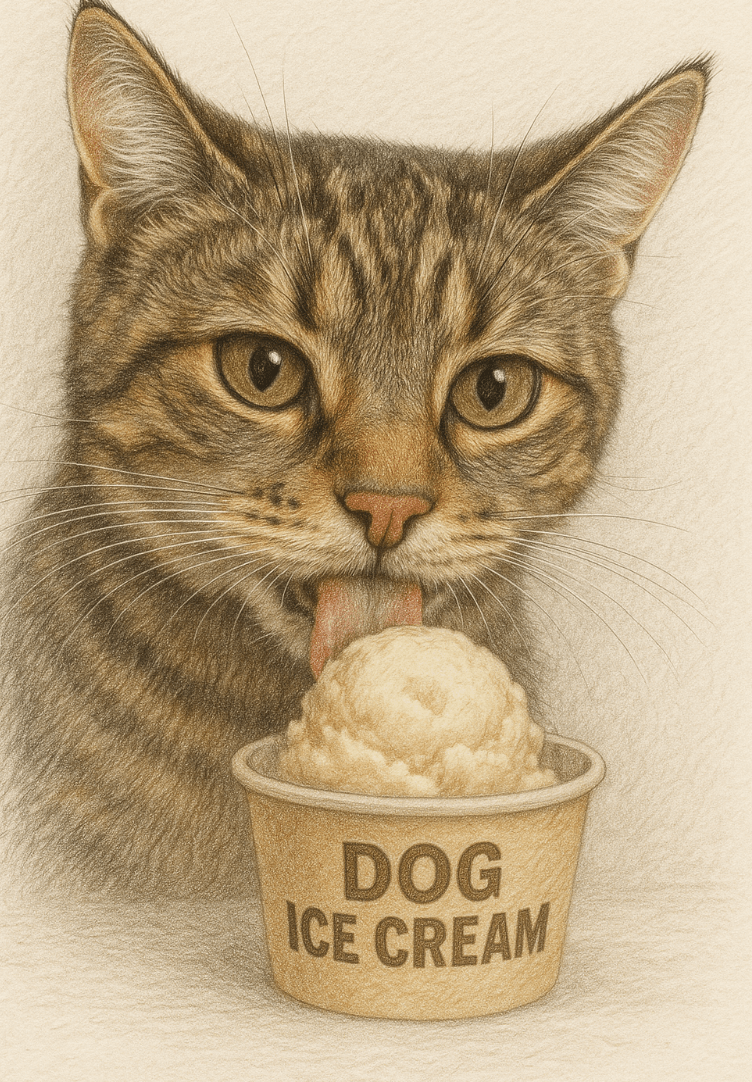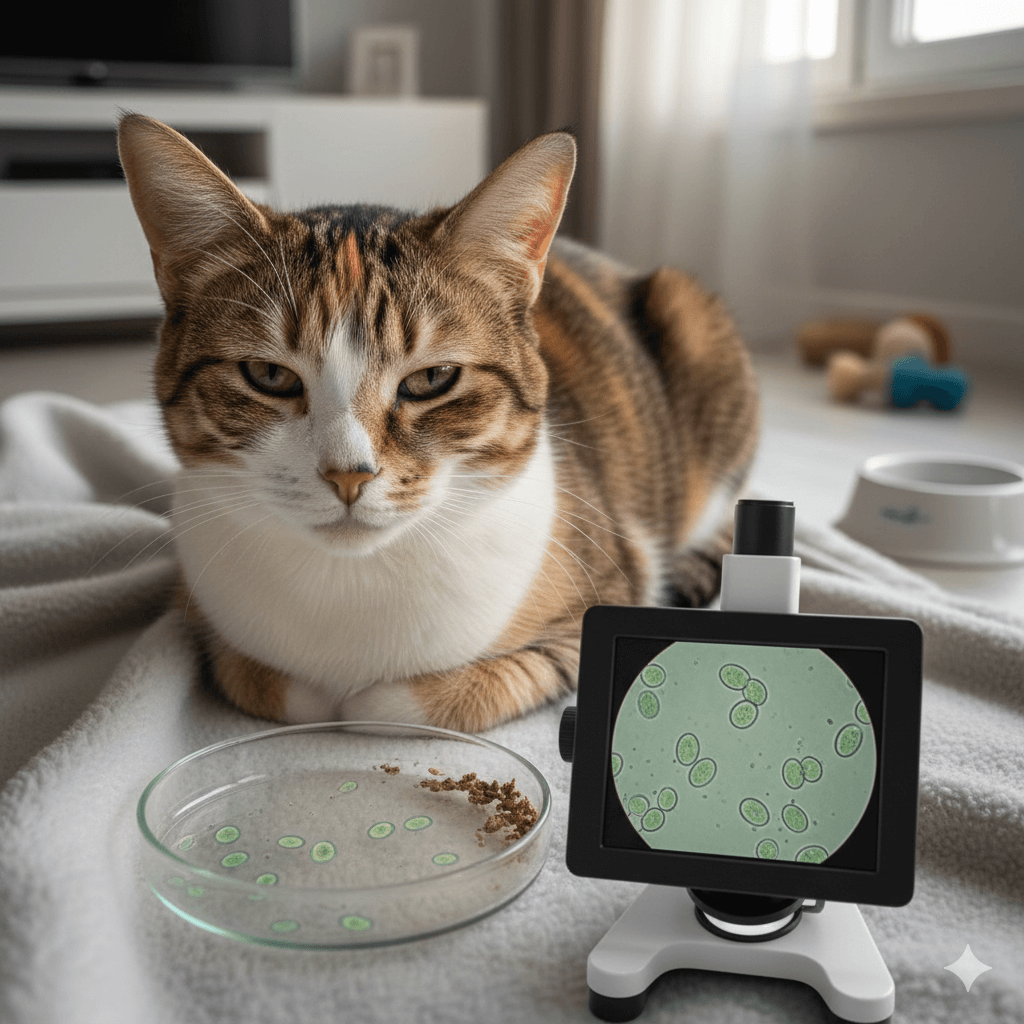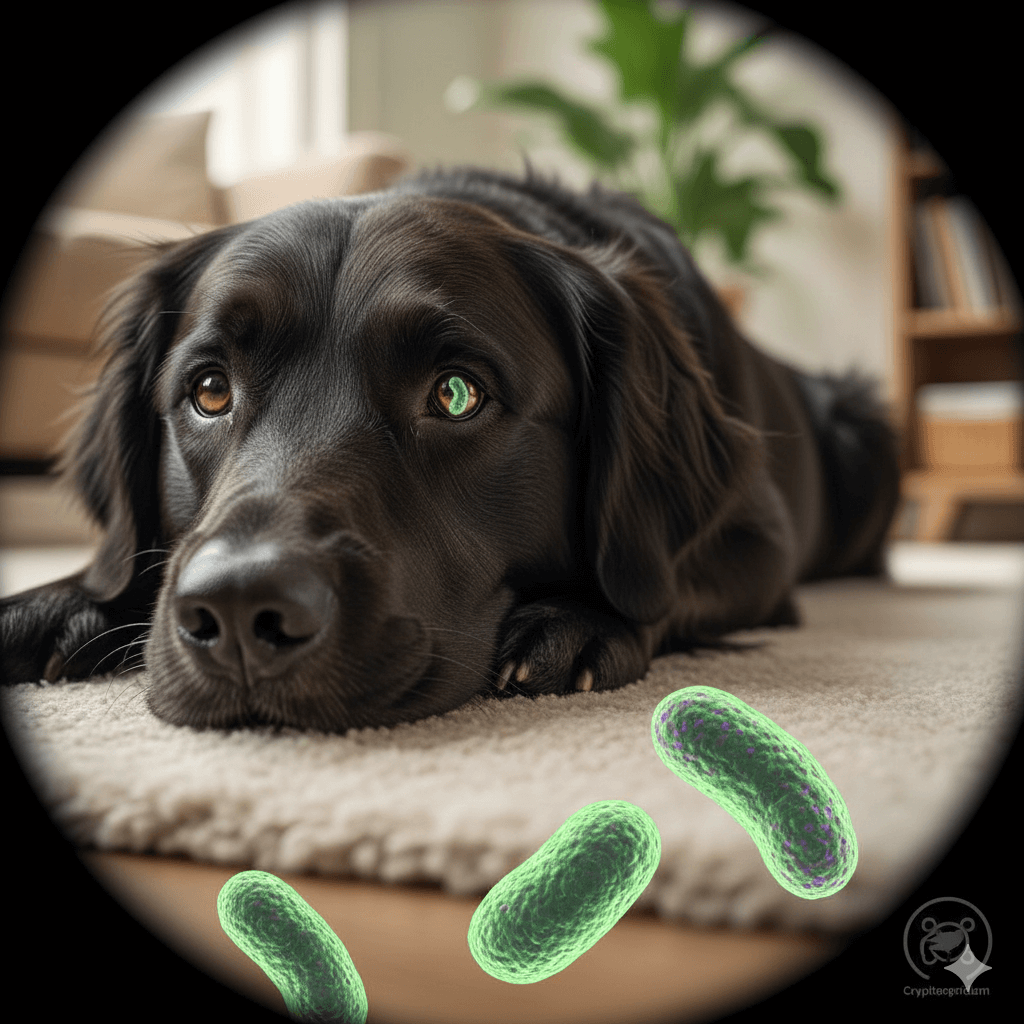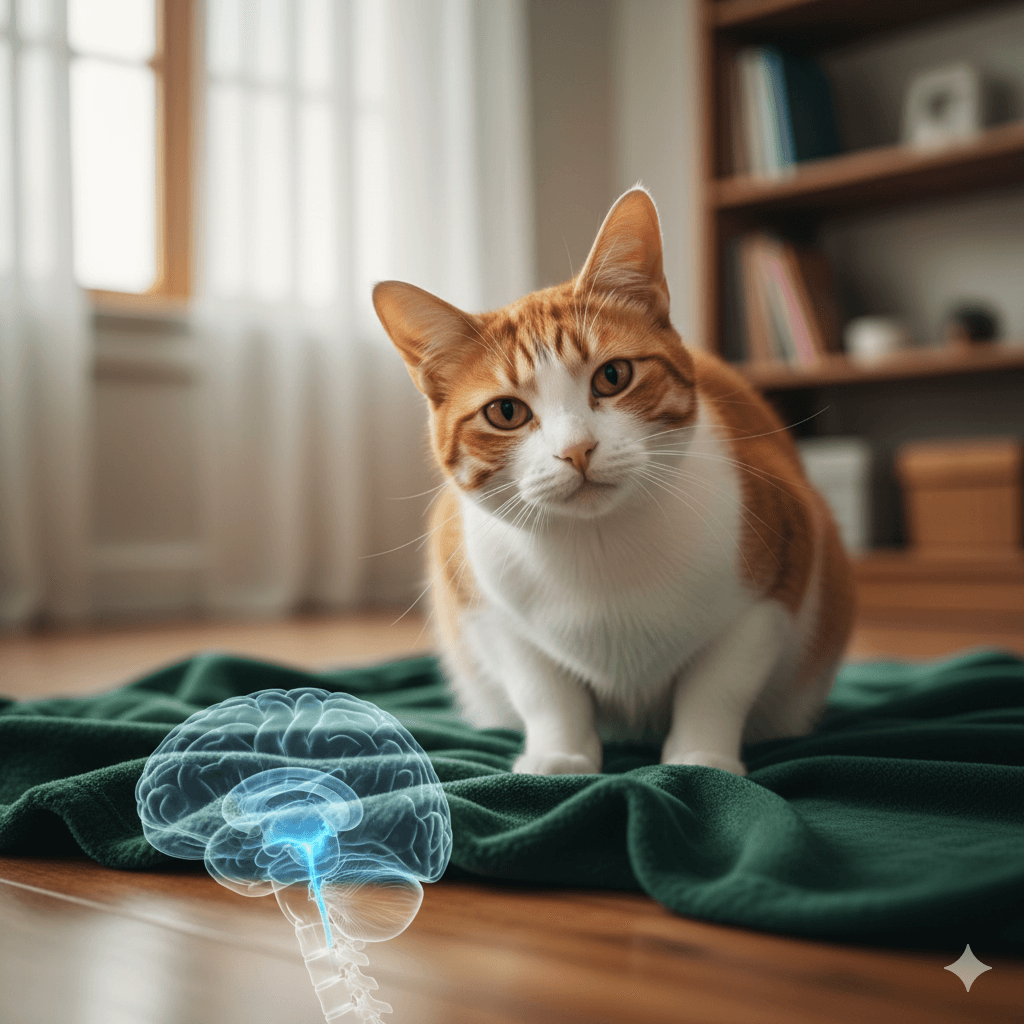Can Cats Eat Dog Ice Cream?
When it comes to treating our pets, we often want to share the joy of special snacks with all our furry companions. But what happens when your curious cat shows interest in your dog’s ice cream? While dog ice cream is formulated specifically for canine consumption, cats have unique dietary needs that differ significantly from dogs. Understanding whether cats can safely indulge in dog ice cream—or if it poses risks—is crucial to keeping your feline friend healthy and happy. In this blog post, we’ll explore the ingredients, potential dangers, and safer alternatives to ensure your cat stays safe while still enjoying tasty treats.
Potential Risks of Feeding Dog Ice Cream to Cats
While dog ice cream may seem harmless at first glance, it can pose several risks to cats due to differences in their digestive systems and nutritional requirements. Here are some key concerns to keep in mind.
Lactose Intolerance:
Many cats are lactose intolerant, meaning dairy-based dog ice cream can cause digestive upset, including diarrhea and vomiting.Artificial Sweeteners:
Some dog ice creams contain xylitol, a sugar substitute toxic to both cats and dogs, which can lead to severe health issues like liver failure.High Sugar Content:
Excessive sugar can contribute to obesity, dental problems, and even diabetes in cats over time.Unsuitable Ingredients:
Certain flavorings or additives in dog ice cream, such as chocolate or artificial flavors, are harmful to cats.Nutritional Imbalance:
Dog ice cream lacks essential nutrients cats need, making it an empty-calorie treat that offers no real benefit.
These risks highlight why caution is essential before sharing dog ice cream with your cat. Always prioritize their specific dietary needs.
Signs Your Cat May Be Sensitive to Dog Ice Cream
If your cat accidentally consumes dog ice cream or you’re unsure about its effects, watch for these warning signs that indicate sensitivity or toxicity.
Vomiting or Diarrhea:
Gastrointestinal distress is a common reaction to lactose intolerance or harmful ingredients in dog ice cream.Lethargy or Weakness:
These symptoms could signal poisoning from toxic substances like xylitol or other additives.Excessive Drooling:
Drooling may indicate nausea or irritation caused by consuming something unsuitable for their system.Loss of Appetite:
A sudden refusal to eat can be a sign of discomfort or illness after ingesting dog ice cream.Increased Thirst or Urination:
This may suggest elevated blood sugar levels due to high sugar content in the treat.
Recognizing these signs early allows you to seek veterinary care promptly, preventing further complications.
Check this guide 👉Can Cats Eat Radishes? Best 7 Expert Tips!
Check this guide 👉Can Cats Eat Flour? Best 7 Expert Tips!
Check this guide 👉Can Cats Eat Pomegranate? Best 7 Expert Tips!
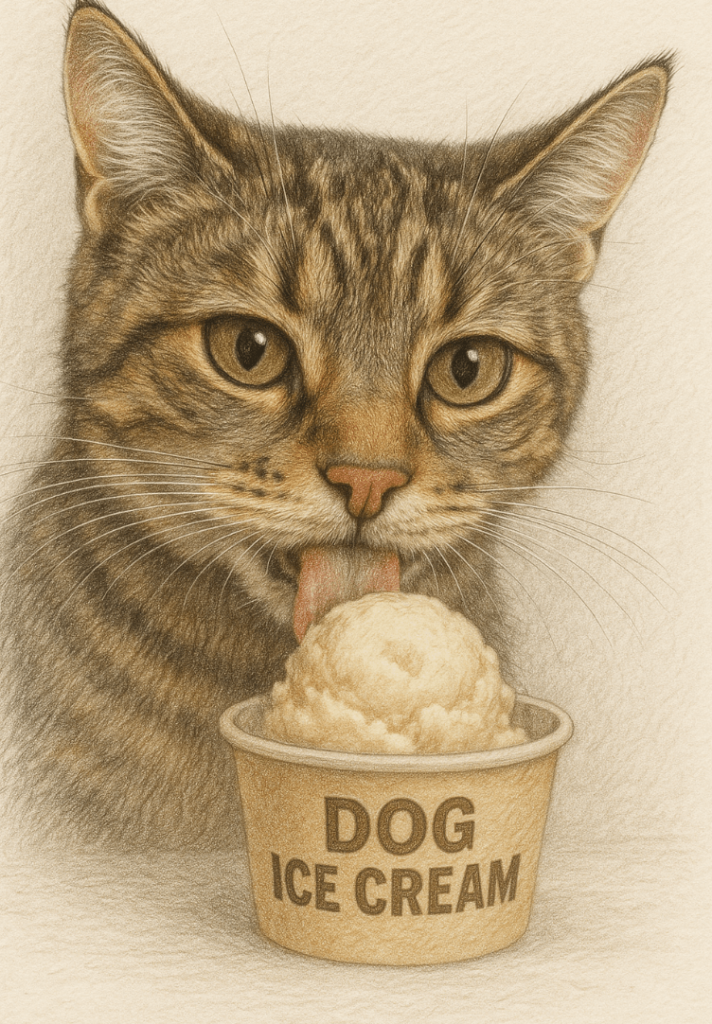
Safe Treat Options for Cats | Ingredients to Avoid in Treats |
|---|---|
Plain, unsweetened yogurt (in moderation) | Xylitol or other artificial sweeteners |
Freeze-dried meat pieces | Chocolate or cocoa derivatives |
Homemade frozen tuna water popsicles | High-sugar syrups or additives |
Cooked chicken or turkey shreds | Dairy products (for lactose-intolerant cats) |
Catnip-infused toys or treats | Artificial colors or preservatives |
How to Safely Treat Your Cat Without Dog Ice Cream
Instead of risking your cat’s health with dog ice cream, consider these safer and more appropriate treat options that align with their dietary needs.
Homemade Frozen Treats:
Blend plain, unsweetened ingredients like water and a splash of tuna juice, then freeze them into small portions for a refreshing snack.Cat-Specific Ice Cream:
Look for commercially available cat-safe ice cream made with lactose-free ingredients and no harmful additives.Freeze-Dried Meat Snacks:
Offer small pieces of freeze-dried chicken, turkey, or beef, which provide protein without unnecessary fillers.Fresh Fruits and Veggies (in Moderation):
Some fruits like blueberries or melon are safe for cats in small amounts, though they should never replace a balanced diet.Interactive Toys with Treat Dispensers:
Use puzzle toys filled with cat-safe treats to engage their minds while rewarding them with healthy snacks.
By choosing these alternatives, you can spoil your cat responsibly without compromising their health.
Tips for Keeping Your Cat Safe Around Pet Treats
Preventing accidental ingestion of inappropriate treats requires vigilance and proactive measures. Follow these tips to keep your cat safe around pet snacks.
Store Treats Out of Reach:
Keep dog ice cream and other pet treats securely stored where curious cats cannot access them.Supervise Shared Spaces:
Monitor interactions between your pets during snack time to prevent accidental sharing.Educate Family Members:
Ensure everyone in your household understands which foods are safe for each pet to avoid unintentional mistakes.Label Treat Containers Clearly:
Clearly mark containers to distinguish between cat-safe and dog-safe items, reducing confusion.Consult Your Veterinarian:
Before introducing any new treat, ask your vet to confirm its safety for your cat’s individual needs.
Taking these precautions ensures a harmonious household where both pets can enjoy their respective treats safely.
Common Mistakes to Avoid When Treating Your Cat
Feeding treats to your cat requires careful consideration to avoid mistakes that could endanger their health. Here are some pitfalls to watch out for.
Assuming Human Food Is Safe:
Many human foods, like onions or garlic, are toxic to cats—even in small amounts. Stick to cat-approved snacks.Overfeeding Treats:
Too many treats can unbalance your cat’s diet, leading to weight gain or nutrient deficiencies. Limit treats to 10% of their daily caloric intake.Ignoring Ingredient Labels:
Failing to read labels can result in exposing your cat to harmful substances like xylitol or artificial preservatives.Using Leftover Dog Food:
Dog food lacks taurine and other nutrients essential for cats, making it an inadequate substitute for their meals or treats.Neglecting Allergies or Sensitivities:
Some cats may have allergies to certain proteins or ingredients; always introduce new treats gradually and monitor for reactions.
Avoiding these mistakes ensures a safer and healthier experience for your cat.
Benefits of Choosing Cat-Specific Treats
Opting for treats specifically formulated for cats offers numerous advantages that generic or dog-centered snacks simply cannot match.
Tailored Nutrition:
Cat treats are designed to meet their unique dietary needs, including essential amino acids like taurine.Improved Digestion:
Formulated with easily digestible ingredients, these treats minimize the risk of stomach upset or allergic reactions.Enhanced Flavor Profiles:
Made with flavors cats naturally love, such as fish or poultry, these treats are more appealing to feline palates.Dental Health Benefits:
Some cat treats are designed to reduce plaque and tartar buildup, promoting better oral hygiene.Peace of Mind for Owners:
Knowing you’re providing a safe and nutritious option gives you confidence in your pet care decisions.
Choosing cat-specific treats ensures your furry companion enjoys snacks that are both delicious and beneficial.
Understanding Your Cat’s Unique Dietary Needs
Cats are obligate carnivores, meaning their bodies require animal-based proteins and fats to thrive. Understanding their dietary needs helps explain why dog ice cream isn’t suitable for them.
High Protein Requirements:
Cats need diets rich in animal protein to support muscle development and overall energy levels.Essential Nutrients Like Taurine:
Unlike dogs, cats cannot produce taurine naturally and must obtain it through their diet to maintain heart and eye health.Limited Ability to Process Carbs:
Cats lack the enzymes needed to efficiently break down carbohydrates, making sugary treats particularly problematic.Sensitivity to Lactose:
Most adult cats lose the ability to digest lactose after kittenhood, making dairy-based treats a poor choice.Hydration Needs:
Cats rely heavily on moisture from their food, so dry treats should be supplemented with wet food or water-rich snacks.
By recognizing these needs, you can make smarter choices about what to feed your cat—and why dog ice cream doesn’t make the cut.
Frequently Asked Questions About Cats and Dog Ice Cream
Is dog ice cream ever safe for cats?
Rarely. Only if it contains no dairy, sugar, or harmful additives—but there are better cat-specific options available.
What should I do if my cat eats dog ice cream?
Monitor for symptoms like vomiting or lethargy. Contact your vet immediately if you notice any adverse reactions.
Can kittens have dog ice cream?
No, kittens are even more vulnerable to digestive issues and should only consume food formulated specifically for them.
Are there lactose-free options for cats?
Yes, you can find lactose-free treats designed specifically for cats, ensuring they enjoy snacks without discomfort.
How can I tell if a treat is safe for my cat?
Check the ingredient list for harmful substances like xylitol or chocolate, and consult your veterinarian for confirmation.
Prioritizing Your Cat’s Health When It Comes to Treats
While it might be tempting to let your cat try a bite of dog ice cream, doing so can put their health at risk. Cats have specific dietary needs that differ greatly from those of dogs, and feeding them inappropriate treats can lead to serious consequences. By understanding the risks, recognizing safe alternatives, and staying vigilant about what your cat consumes, you can ensure they stay healthy and happy. Remember, your feline friend relies on you to make the best choices for their well-being—so always prioritize their safety above curiosity or convenience.
Understanding Cryptosporidium in Cats: Best 7 Expert Tips! – Spot symptoms, treat safely, and stop parasite spread in your home.
Understanding Cryptosporidium in Dogs: Best 7 Expert Tips! – Learn symptoms, treatment & prevention for this stubborn gut parasite.
Understanding Syringomyelia in Cats: Best 7 Expert Tips! – Recognize signs, manage pain, and support your cat’s neurological health with vet-backed guidance.
Understanding Syringomyelia in Dogs: Best 7 Expert Tips! – Expert insights on symptoms, MRI diagnosis, pain management & quality of life.

